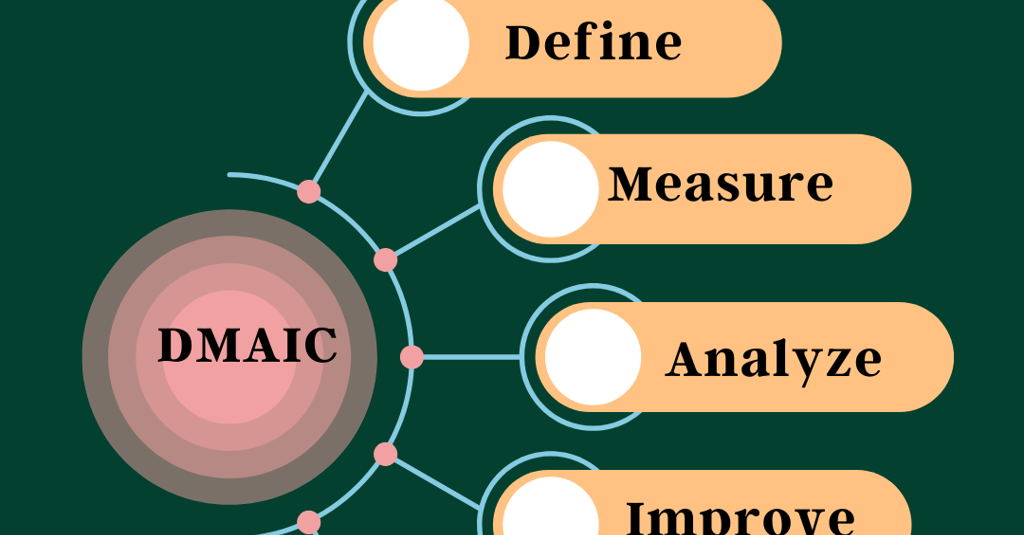Unlock Potential with DMAIC for Continuous Improvement
Discover how DMAIC goes beyond a set of steps to become a philosophy of continuous improvement. Empower your teams to analyze processes and implement impactful changes to achieve your business goals.
5/4/20254 min read


Introduction to DMAIC
Organizations across industries are increasingly turning to DMAIC as their go-to methodology for process improvement, and for good reason. The compelling reasons to Embrace DMAIC are deeply rooted in its core principles, offering a powerful pathway to sustainable success.
Firstly, DMAIC champions Data-Driven Decisions. It moves beyond gut feelings and assumptions by emphasizing the collection and rigorous analysis of data at every stage. This ensures that improvement efforts are based on facts, leading to more targeted and effective solutions.
Secondly, its Structured Approach provides a clear and systematic roadmap for tackling complex problems. The five distinct phases – Define, Measure, Analyze, Improve, and Control – offer a logical flow, ensuring that no critical step is overlooked and providing a framework for consistent and repeatable results.
A key strength of DMAIC lies in its Focus on Root Causes. Instead of merely addressing symptoms, the methodology delves deep to identify the fundamental issues driving process inefficiencies or defects. By tackling these underlying causes, DMAIC delivers long-term, sustainable improvements rather than temporary fixes.
The direct impact of a well-executed DMAIC project is often seen in Improved Efficiency and Quality. By streamlining processes, eliminating waste, and reducing errors, organizations can achieve higher output with fewer resources and deliver products or services of superior quality.
Ultimately, these improvements translate into Increased Customer Satisfaction. By optimizing processes to better meet customer needs, reduce pain points, and deliver consistent, high-quality experiences, organizations can foster stronger customer loyalty and enhance their reputation. Let's examine deeper at each stage:
1. Define: Laying the Groundwork for Success
The Define phase focuses on clarity. Here, you explicitly state the problem you're attempting to tackle, define the project scope, and establish your objectives. This phase's key activities are as follows:
Defining the Problem: What specific issue are you facing? Be precise and avoid vague statements.
Identifying the Customer: Who is affected by this problem? What are their needs and expectations?
Mapping the Process: Create a high-level overview of the current process to understand its boundaries.
Setting Goals: What measurable improvements are you aiming for? These should be Specific, Measurable, Achievable, Relevant, and Time-bound (SMART).
Forming the Team: Assemble a cross-functional team with the necessary skills and knowledge.
Developing a Project Charter: This document outlines the project scope, objectives, timelines, and team roles.
2. Measure: Understanding the Current State
Once you've determined what you want to repair, the Measure phase focuses on quantifying the process's present performance. This entails gathering pertinent data to create a baseline and highlight areas of concern. Key actions include:
Identifying Key Metrics: What data will provide insights into the problem? Examples include cycle time, defect rates, customer satisfaction scores, etc.
Developing a Data Collection Plan: How will you gather the necessary data? Consider sampling methods, data sources, and measurement systems.
Collecting the Data: Execute your data collection plan accurately and consistently.
Analyzing the Measurement System: Ensure your measurement tools and processes are reliable and accurate.
Establishing a Baseline: Calculate the current performance levels for your key metrics.
3. Analyze: Uncovering the Root Causes
With a strong understanding of the existing condition, the Analyze phase focuses on finding the root causes of the problem. This is when you go beyond the symptoms to identify the real causes of inefficiencies or flaws. Key actions include:
Process Analysis: Examine the process map in detail to identify potential bottlenecks and areas for improvement.
Data Analysis: Utilize statistical tools and techniques to identify patterns, trends, and correlations in your data.
Root Cause Analysis: Employ tools like Fishbone Diagrams (Ishikawa Diagrams) or the 5 Whys technique to systematically uncover the fundamental reasons behind the problem.
Hypothesis Testing: Formulate and test potential root causes to validate their impact on the problem.
4. Improve: Implementing and Validating Solutions
The Improve step involves putting your findings into action by developing and executing solutions to address the main problems discovered in the Analyze phase. Key actions include:
Brainstorming Solutions: Generate a range of potential solutions to eliminate or mitigate the root causes.
Selecting the Best Solutions: Evaluate the feasibility, impact, and cost-effectiveness of the proposed solutions.
Developing an Implementation Plan: Outline the steps, resources, and timelines for implementing the chosen solutions.
Piloting the Solutions: Test the solutions on a smaller scale to assess their effectiveness and identify any unintended consequences.
Implementing the Solutions: Roll out the validated solutions across the entire process.
Measuring Results: Collect data to evaluate the impact of the implemented solutions on the key metrics.
5. Control: Sustaining the Gains
The third step, Control, focuses on ensuring that the gains made are sustained over time and that the process does not revert to its prior state. Key actions include:
Developing a Control Plan: Document the procedures and monitoring systems needed to maintain the improved process.
Implementing Statistical Process Control (SPC): Utilize control charts to monitor process variation and identify any deviations from the desired state.
Standardizing the Improved Process: Update process documentation, training materials, and work instructions to reflect the changes.
Monitoring Performance: Continuously track key metrics to ensure the process remains stable and effective.
Establishing Feedback Mechanisms: Create systems for ongoing monitoring and continuous improvement.
In Conclusion:
DMAIC is more than just a set of steps; it's a philosophy of continuous improvement. By embracing this powerful methodology, organizations can empower their teams to systematically analyze their processes, implement impactful changes, and ultimately achieve their business goals. So, are you ready to dive deep and unlock the potential within your processes with DMAIC?
